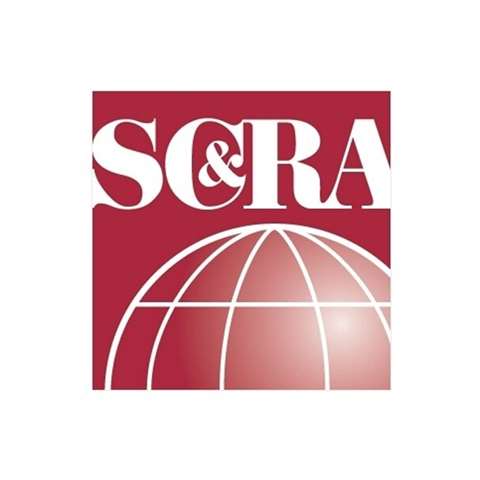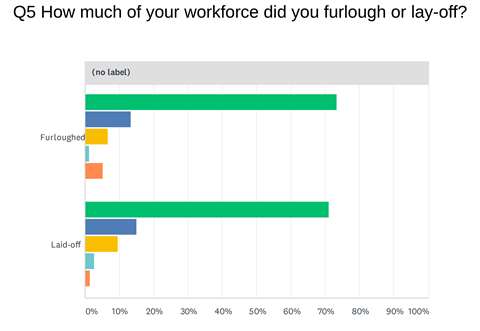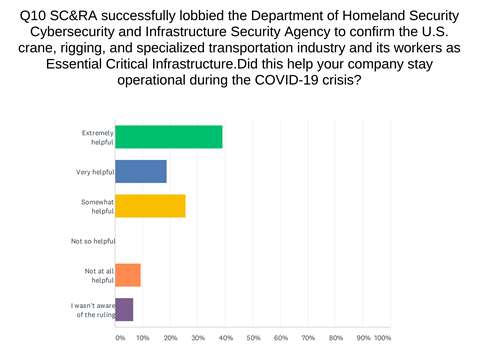Behind to see ahead: SCRA news July 2020
22 September 2020

In June 2020 SC&RA received the results of a survey distributed to members as part of a research initiative connected to the impacts of the coronavirus Covid-19 on crane, rigging and specialized transport companies.
The Association was very pleased with the number of members who took part in the questionnaire, which provided valuable insight on how nearly 80 member companies have navigated the last few months, as well as how they’re looking ahead as the country and the world comes back online.
Approximately 45 percent of survey respondents indicated they represented specialized transportation companies, with around 30 percent claiming crane and-or rigging, and an additional near-30 % comprising supporting services for each. Of note, nearly 80 % of companies indicated a workforce of between 1 and 100 people.

As part of the initiative, SC&RA also interviewed Scott Ketcham, director, Directorate of Construction at Occupational Safety and Health Administration for his take on how OSHA has approached the crisis throughout and positioned themselves both now and for the future in regards to additional Covid-19-related challenges that may arise in 2020.
Plugging back in
As the pandemic brought the world to a halt in March, SC&RA quickly and successfully lobbied the Department of Homeland Security’s (DHS) Cybersecurity and Infrastructure Security Agency to confirm the US crane, rigging and specialized transportation industry and its workers as essential critical infrastructure.
Since that victory, the Association noticed that the impact of Covid-19 has largely depended on where companies are located. Some companies have seen fairly significant impacts, while others have seen an abundance of work.
Nearly 85 % of survey respondents indicated that SC&RA’s proactive move with DHS fell within the categories of Somewhat Helpful, Very Helpful and Extremely Helpful. To that end, approximately 73 % of those who answered said they didn’t have to furlough anyone, and approximately 71 % specified that they didn’t have to lay anyone off. That said, around 13 % of respondents explained that they did have to furlough 0 to 10 % of their workforce, while approximately 15 % said they had to lay off 0 to 10 % of their workers. Drilling down, almost 7 % answered that they’ve had to furlough between 10 and 25 % of their workers, while nearly 10 % of respondents indicated they had to lay off between 10 and 25 % of their workforce.
On the OSHA side, Ketcham pointed out that, as the industry now plugs back into the marketplace at varying degrees and intensities, they can make use of a guide booklet – Guidance on Preparing Workplaces for Covid-19 – developed by the Administration for workers and employers who are interested in learning more about keeping their workplaces safe and healthy during the pandemic.
“Measures that promote social distancing and separate workers from one another can help prevent spread of the virus in workplaces,” he noted. “OSHA recommends that employers use engineering controls, such as sneeze guards and other barriers, to separate workers from potentially infectious customers or visitors, and these controls may also be effective at preventing Covid-19 from spreading from worker to worker. Wearing face masks in the workplace can also help to contain the wearer’s potentially infectious respiratory secretions—including coughs and sneezes.”
Similar to SC&RA in terms of proactivity, Ketcham explained that, since the beginning of the coronavirus outbreak, OSHA did the following: issued a temporary enforcement response plan to help protect the nation’s workers in high-risk industries; issued industry-specific guides for workers in industries such as retail, construction, delivery services and manufacturing; issued five sets of guidance aimed at expanding the availability of respirators for health care workers; published a comprehensive guide for employers to prepare their workplaces for the outbreak; reminded workers and employers about the strong whistleblower laws and regulations; and issued a temporary guidance regarding recordkeeping during the coronavirus pandemic that helps employers focus their response efforts on implementing good hygiene practices in their workplaces and otherwise mitigating Covid-19’s effects.

Bringing them back
While SC&RA members explore the benefits of OSHA’s hard work during the last several months, those who’ve had to alter their workforce are doing their best to remedy the issue – with 12 % of survey respondents confirming they plan on bringing back the 10 to 25 % of workers they’ve had to furlough within the next 60 days, and nearly 20 % verifying that they plan on doing the same with any laid-off workers.
As for health protocols, more than 85 % of participants said they haven’t had any difficulty sourcing masks or other personal protective equipment for their employees. In addition, nearly 67 % of those who answered confirmed that they had both applied for and received a PPP (Paycheck Protection Program) loan, while nearly 20 % had not, and approximately 13 % were unsure.
One particular survey question asked participants: Were Congress to enact future Covid legislation incentives to buy new trucks and-or trailers, like the elimination of the 12 % Federal Excise Tax, how likely are you to purchase additional new equipment beyond what you would have bought anyway without an incentive?
Approximately 17 % answered Very Likely, while nearly 35 % answered Likely. Only around 15 % answered Not Likely, while approximately 33 % answered It Wouldn’t Change my Purchasing Quantity.

Looking ahead
As the agency has continued to work with industry throughout the pandemic, said Ketcham, OSHA guidance documents have allowed the agency to have a more nimble response to the ever-changing understanding of the virus. “OSHA continues to issue industry-specific alerts – such as the OSHA Alert on Covid-19 Guidance for the Construction Workforce – that provide targeted guidance on practices and procedures that will help protect workers’ health and safety.”
He added, “Employers are and will continue to be responsible for providing a workplace free of known health and safety hazards. OSHA has pre-existing requirements and standards that not only remain enforceable and in place, but also apply to protecting workers from the coronavirus.”
Ketcham emphasised that OSHA utilises existing safety and health standards related to personal protection, hygiene and respiratory protection, as well as the statutory General Duty Clause, and considers CDC guidelines when determining violations of workplace safety requirements as they relate to Covid-19.
Looking ahead, he pointed out that the coronavirus pandemic is constantly evolving, so workers and employers should continue to visit the Administration’s Covid-19 webpage (at www.osha.gov) for the latest information regarding safety in the workplace.
“OSHA is constantly assessing the situation to ensure workplace guidance is relevant and effective. The agency’s On-Site Consultation Program offers no-cost and confidential occupational safety and health services to small- and medium-sized businesses to identify workplace hazards, provide advice for compliance with OSHA standards and assist in establishing and improving safety and health programmes. On-site consultation services are separate from enforcement and do not result in penalties or citations.”
As for SC&RA’s survey respondents, one specific question addressed both the near- and long-term future: As projects start coming back and you’re competing with other contractors for work, what are the top ways you plan to establish your competitive advantage?
Notable percentages (which were multi-categorical so totals will exceed 100 percent) included: nearly 73 % indicate there is a strong likelihood they will rely on experience and knowledge, as well as industry reputation, while only 16 % claim they will invest in new technology to gain efficiencies and enhance current capabilities.
While only 16 % say there is a Strong chance they’ll diversify scope of work and expand into different lines of business, almost 27 % admit there is a Good chance of doing it. Relatedly, only around 17 % indicate there is a Strong chance they will focus business lines to streamline operations and gain technical expertise (more specialized), but a full 28 % confirm there is still a Good chance they’ll do so.







